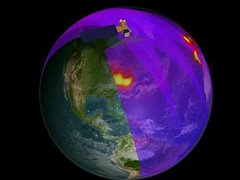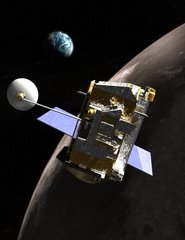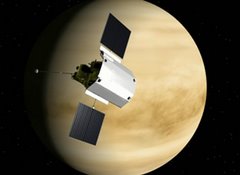
Then there are days where I'm reminded of how much I love what I do, and how cool and very utterly exciting all of it is.
Today started like that first description. Scratch that - the past week has been like that first description. As I sat down to write this blog entry, however, today became one of those days that's like the second description. I was instantly reminded of why I got into this buisness in the first place:
Science + New ways to view the world = Awesomeness
The variables in the above equation can be substituted with just about any kind of scientific pursuit, such as it is in the title of this blog entry.
2.

What in the world am I talking about, you might ask? It's simple. Take one constantly erupting volcano, add in some high-tech observations from 705 km (438 miles) above the Earth, and presto! Instant awesomeness.
Kilauea volcano has been making the news rounds lately because it started erupting from the main caldera in March. (You can find out information about the eruption here). According to the Associated Press, prior to the March eruptions, Kilauea's caldera hadn't erupted since 1924. Back then, the best scientific data we could get about volcanic gases came from a view rare souls who were brave enough to get as close as they dared. Flash forward to the present. Now, the Ozone Monitoring Instrument (OMI) aboard the Aura spacecraft has been taking daily data on the SO2 emissions from Halema 'uma 'u vent. These data show the enormous amout of SO2 that is spewing from the vent, and give us that information on a daily basis.
Like I said, one of the reasons why I love what I do.
The images on this page show 1. Kilauea from the ground and from 2. Aura's OMI instrument.
Related links:
Kilauea volcano
OMI SO2 measurements
Earth Observatory article on OMI SO2 and Kilauea





No comments:
Post a Comment